Lecture #6: Cultivation of Bacteria II
I. Pure cultures
A. Are cultures that are derived from ____________________ bacterial
cell and thus contain only one species.
B. Are ____________________________________.
1. Most ecological niches harbor __________________________ _________________________________
of microorganisms (ex: ____________________________________)
2. Clinical specimens contain both _________________________
(disease causing) and ____________________________________
microorganisms (e.g. urine samples and throat swabs).
C. Deriving a pure culture is very important because it allows us to ________________________,
characterize, study and, perhaps most importantly, develop ________________________________strategies
to control the microorganism.
II. Techniques used to derive a pure culture:
A. ________________________– the original culture is diluted
serially and a small volume of the final dilution is ________________________
_______________________________. Isolated colonies develop on the
____________________________________.
B. ____________________________ – the original culture
is diluted serially and a small volume of the final dilution is added to ____________
_______________ which is poured over an agar plate and allowed to
harden. Isolated colonies develop ____________________________.
C. _______________________– the original culture is ______________
___________________________ using and inoculating loop. This is a
_________________________________________ method and results
in isolated colonies on the agar surface.

1. It is possible that a single colony on a streak plate could contain
a minute level of contamination. Therefore, we ______________ ________________________________________
another plate for an “absolutely” pure colony.
Characteristics of a contaminated colony:
a. ________________________________
b. different colors
c. different _______________________ (mucoid on one side
and dry on the other)
2. Streak plate demonstration (Be certain to be compentent with the triplet
streak technique.)
III. Environmental Influences
A. ___________________________
1. All microorganisms have a temperature range over which they can grow.
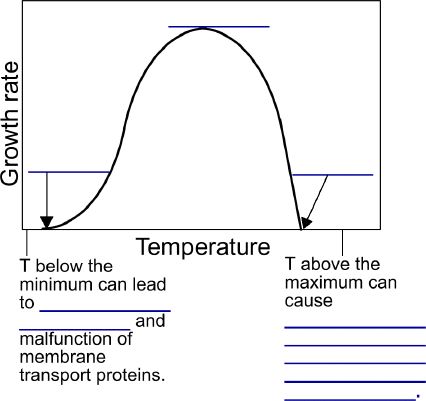
2. According to their growth temperature range, bacteria are classified
as:
a. ______________________ – cold-loving organisms
with an optimum growth temperature that is _______________ _____________________________.
Chlamydomonas nivalis (common on snow in North America)
Ancylonema nordenskioldii (common on ice in the Arctic)
http://denali.frontier.iarc.uaf.edu:8080/~nozomu/snowalgae_ak.html
b. _______________________ - optimum growth temperature
between _____________________________ but can grow at _______________________.
These organisms are largely responsible for the _____________ ______________________________.
c. _________________________ – includes most bacteria,
optimum growth temperature of _____________________. Most
__________________________ microorganisms are mesophiles as
they grow at ________________________ ____________________
(37ºC).
d. ___________________________– heat-loving organisms
with an optimum growth temperature between 55-65oC.
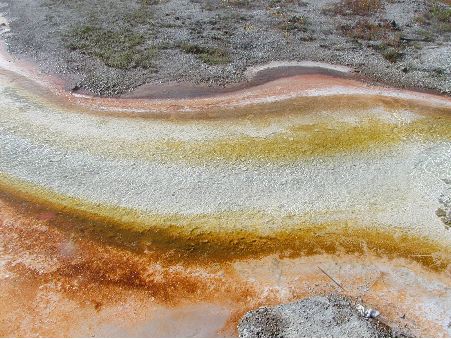
Hot springs run off channel shows a “V” shaped growth pattern.
In the white area (the hottest area), only nonphotosynthetic bacteria grow.
As the water cools on the edges, other photosynthetic microorganisms can
grow and thus the colors deepen.
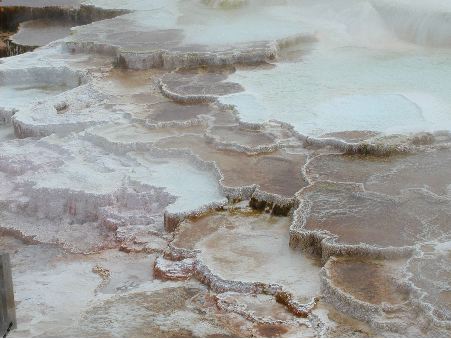
Microbial mats of Yellowstone terraces. These mats can be several centimeters
thick and are held together by photosynthetic microorganisms.
The yellowstone thermophile site:
http://www.nps.gov/yell/nature/thermophiles/biopro.html
* If you are interested in reading more about the thermophiles of the Yellowstone
area, Life at High Temperatures by Thomas D. Brock can be checked out from
Rachel.
e. _________________________________ - love extreme heat,
optimum growth temperature is _________________ (hydrothermal
vents).
http://www.mbio.ncsu.edu/AG/blacksg.jpg
3. pH - the measure of __________________________________ ____________________________.
a. ________________________________ – acid-loving organisms,
grow best at a pH of 0.1 - 5.5
http://biology.bangor.ac.uk/~bss014/pages/WhealJaneProject.html
b. _______________________________ – grow best at a pH
of 5.5 – 8.0
c. __________________________ – base-loving organisms,
grow best at a pH of 8.5 – 11.5
4. Osmotic Pressure and _______________________________
a. Osmotic pressure is the force that _______________ exerts
on the plasma membrane of an organism. Water moves across the membrane in
response to an __________ _______________________________________________
in the environment.
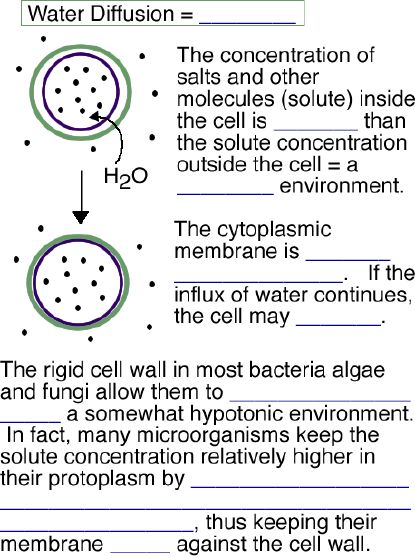
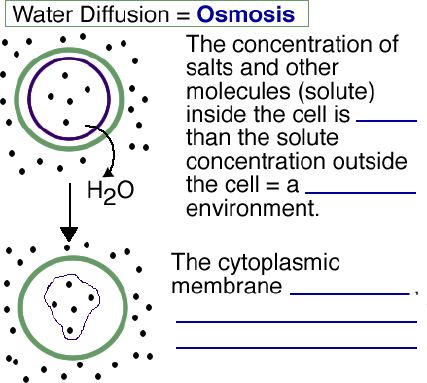
b. *Note - osmotic concentration of the environment affects the ________________________________________
to a microorganism. The greater the solute concentration of the environment,
the _________________________________ ______________________________.
c. Some prokaryotes can maintain availability of water in hypertonic environments
by _______________________ ______________________________________________.
Microorganisms that can do this and thus tolerate these hypertonic environments
are ________________________ (e.g. Staphylococcus aureus).
d. Some bacteria specifically ______________________ an environment
with a high concentration of ______________ _____________________.
These organisms are called ________________________.
d. Atmospheric O2 Concentration
According to their requirement for atmospheric O2, bacteria are
classified as follows:
1. ________________ – require atmospheric O2
for growth
2. ________________________ – killed or cannot grow
in the presence of O2
3. ______________________________ – do not require
O2 for growth, but grow better when it’s present
4. ______________________________ – require low concentrations
of O2 (between 2 and 10%)
5. ___________________ anaerobes – can survive in the
presence of O2, but do not use it in their metabolism.
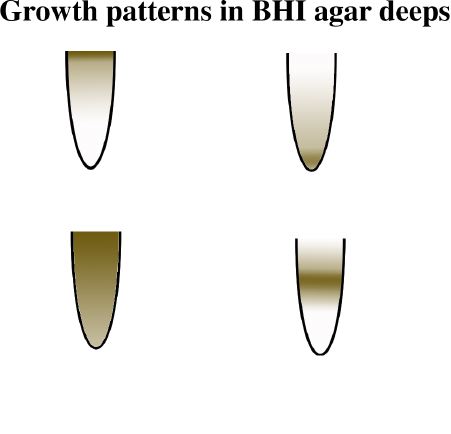
|






